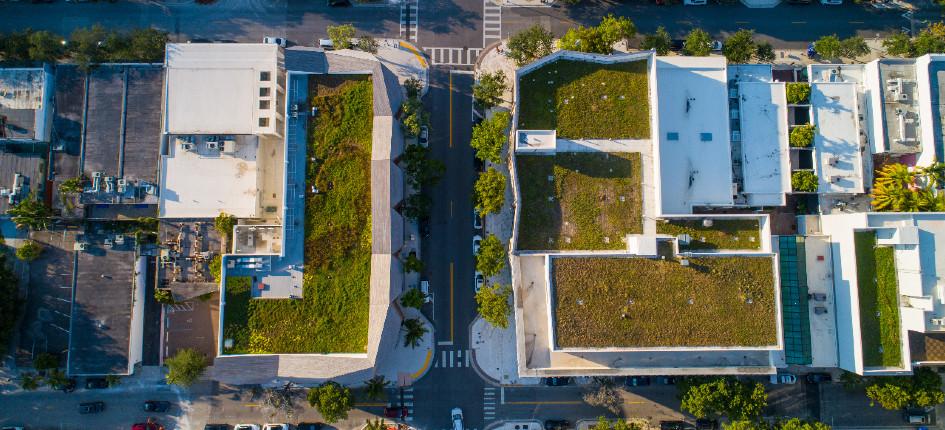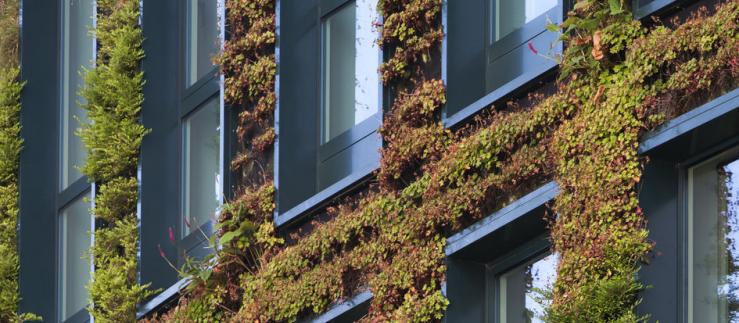Marcel, you are a principal of Econ Group, a medium sized design-firm based in Vancouver that builds energy efficient homes to the Passive House standard. Could you let us know a bit more about your work – what is a Passivehouse (PH) and is the Canadian definition different from the Euoropean one?
During the 2010 Vancouver Olympic the International Passivehouse standard got introduced in Canada, the exact same standard as the one used in Europe. This was done with the ‘Austria House’ in Whistler, which was specifically built for the Olympics to showcase Alpine high-performance construction methods, such as mass-timber and Passivehouse. I was personally involved with some parts of the construction of this project and it led to numerous PH certified projects over the last ten years locally and across Canada.
When you compare Switzerland and Canada, what drives the demand for net zero homes in the respective countries? Where do you see differences and commonalities between Switzerland and Canada?
Canada’s energy-efficiency in the building sector is far behind the Swiss one, but it is changing now. The main push towards net zero buildings is driven by the code change (local regulations EDIT), but there is also an increased awareness by consumers on climate change and through that an interest to build resilient, low-emissions buildings. Unlike in Switzerland, the cost of energy is still very low in Canada, which is likely to change over the next decade. As a commonality between the two countries I see the tradition of timber construction, although applied in different systems. Both countries incorporate various wood products in their buildings which is an excellent way to minimize embodied carbon.
British Columbia has introduced the BC Energy Step Code as an approach to establish more energy efficient buildings. Could you let us know what the main components of this code are and how it compares to the Passivehouse standard? Do you think other Canadian provinces will follow suit?
The BC Energy Step Code is changing the energy-performance requirement of the building code in a phased approach. The goal is to get to ‘net-zero ready’ by 2032 for new construction. Just like Passivehouse the Step Code uses performance based metrics, it looks at ‘Thermal Energy Demand Intensity’ (TEDI) which directly relates to the envelope, ‘Mechanical Energy Use Intensity’ (MEUI) which relates to HVAC equipment and ‘Air Changes Per Hour’ (ACH) which states the Airtightness of the envelope. The final step of the code is quite similar to the Passivehouse Standard although there are some differences in the metrics which will result in the PH Standard being 10-20% more efficient. Ontario and Quebec are already working with similar codes, other provinces will follow suit as most of them have signed the ‘Pan-Canadian Framework on Clean Growth and Climate Change’ in 2016 which sets the objective of having a “net zero ready” national building code by 2030.
Canada’s National Building Code is going to see important changes in 2020. Is it already known what those changes are? In your opinion will it affect demand for sustainable building products in Canada?
Correct, a revision of the National Building Code will come into effect at the end of 2020. There is a significant emphasis on energy performance, and it appears to be following the lead of the BC Step Code and it also allows for taller, up to 12 stories, mass-timber structures.
The demand for sustainable building products will increase massively over the next decade, the Vancouver Economic Commission in their ‘Green Building Market Research’ talks about a 3.3 billion dollar market increase in the Vancouver area alone. The main product sectors include: Fenestration, Insulation Products, Ventilation and Heat Pump based Mechanical Equipment.
What are the most important aspects that Swiss SMEs need to be aware of when they prepare for a successful market entry in Canada? (training of workers, different standards, certification, the importance of working with a local partner, setting up a subsidiary, etc. )
Canada is a large country with several different climatic zones and different provincial- and municipal codes and bylaws. The main hubs are the Toronto, Ottawa, Montreal area in the East and Vancouver in the West, initially focusing on those will make market entry easier. There is generally a lack of skilled construction workers in Canada which makes training and possibly importing work force necessary. It is important to work with local partners to access the market and take advantage of their distribution network. Like Switzerland there is a culture of small to mid-size companies in Canada that are at the forefront of innovation. Most products sold in Canada will need to be certified to the local safety standard CSA, which can be done through a European testing facility like TUV or directly in Canada.
Why do you think Swiss companies that are active in the net zero building sector would benefit from attending a business mission to Vancouver?
The city of Vancouver and its surrounding area is the leader in high-performance building nationally. Visiting the area will give insight into the local building culture and an opportunity to make valuable business connections. The similarity between Southern British Columbia and Switzerland in climate and timber construction culture makes it an ideal first steppingstone into the Canadian market.
Canada has an impressive wood processing industry. Why would Canadian companies be interested in products, technology and services from Switzerland?
Canada has a massive amount of forest that is unfortunately not always harvested sustainably. Softwood as the largest resource is mass produced into light-wood frame construction products (studs, plywood etc) of which the majority is exported to the US and China. However there is an emerging market around mass timber and high-performance wood products like windows/doors and wood fiber insulation. What is lacking in Canada, which creates opportunities for Swiss companies, is the know-how around wood processing technology and setting up efficient production facilities.
In your opinion, will a successful market entry in Canada also be a stepping stone to the US or would you recommend looking at the two countries as two complete different markets?
There isn’t a simple answer to this question, it really depends on the product and also the changing political landscape. There is a substantial enough difference between the two countries in culture and politically. While the US is largely focused on producing inside their country, Canada has opened up the doors to European import with a free trade agreement a few years ago. But the reality is that we share a large border and a lot of trade across it, which would make a combined market approach possible. Keep in mind that the US with a similar geographic area as Canada has about 9x more inhabitants. I would recommend making this business case analysis on a case by case bases.
Is there anything else that you would like to share?
Just a few closing words to summarize: As Canada is entering the new area of high-performance buildings and with that the increase in the quality of design and construction, a lot of opportunities arise for Swiss companies to enter the market. Keep in mind the size of the country and its regional differences but also don’t underestimate how quickly ‘new’ technology will be accepted by the general public.






